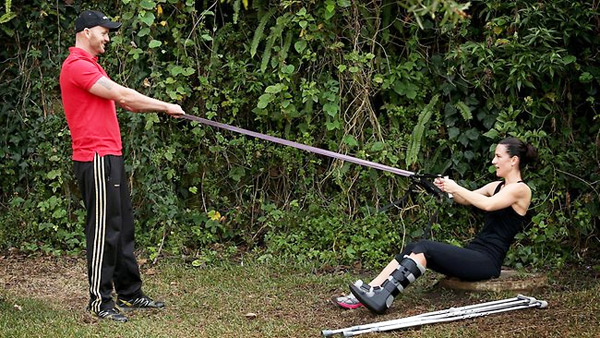
A supervised exercise program and self-management advice, like those commonly given with physical therapy, did not improve activity limitation or quality of life compared with advice alone after removal of immobilization for patients with an uncomplicated ankle fracture, according to a study in the October 6 issue of JAMA.
Ankle fracture is a common injury and is treated with reduction (realignment), sometimes with surgical fixation, followed by a period of immobilization while the fracture heals. The benefits of rehabilitation after immobilization for ankle fracture has been unclear, according to background information in the article.
Anne M. Moseley, Ph.D., of the University of Sydney, Australia, and colleagues randomly allocated 214 patients with isolated ankle fracture presenting to fracture clinics in 7 Australian hospitals to rehabilitation (n = 106) or advice alone (n = 108), following removal of their immobilization cast. Rehabilitation consisted of a supervised exercise program (individually tailored, prescribed, monitored, and progressed by a physical therapist) and advice about self-management. Participants in the advice group were provided with a single session of self-management advice about exercise and return to activity.
There was follow-up for 170 patients (79 percent) at 6 months. Activity limitation and quality of life were assessed at study entry and at 1, 3 and 6 months. At study entry, participants had significant activity limitation and low quality of life. The researchers found that the rehabilitation program and self-management advice did not improve activity limitation or quality of life compared with advice alone. The treatment effects were not associated with fracture severity, age or sex.
“We have previously shown that recovery of activity limitation after ankle fracture is rapid in the first 6 months and that adding passive stretch or manual therapy to a supervised exercise program did not enhance the benefits of exercise alone,” the authors write. “It is possible that the lack of treatment effect we observed in this trial is attributable to the fact that rehabilitation cannot accelerate this rapid recovery. These findings and the findings of the present trial suggest that routine care for patients after isolated ankle fracture should include self-management advice at the time of removal of immobilization but not a supervised exercise program like those typically provided in a physical therapy program.”